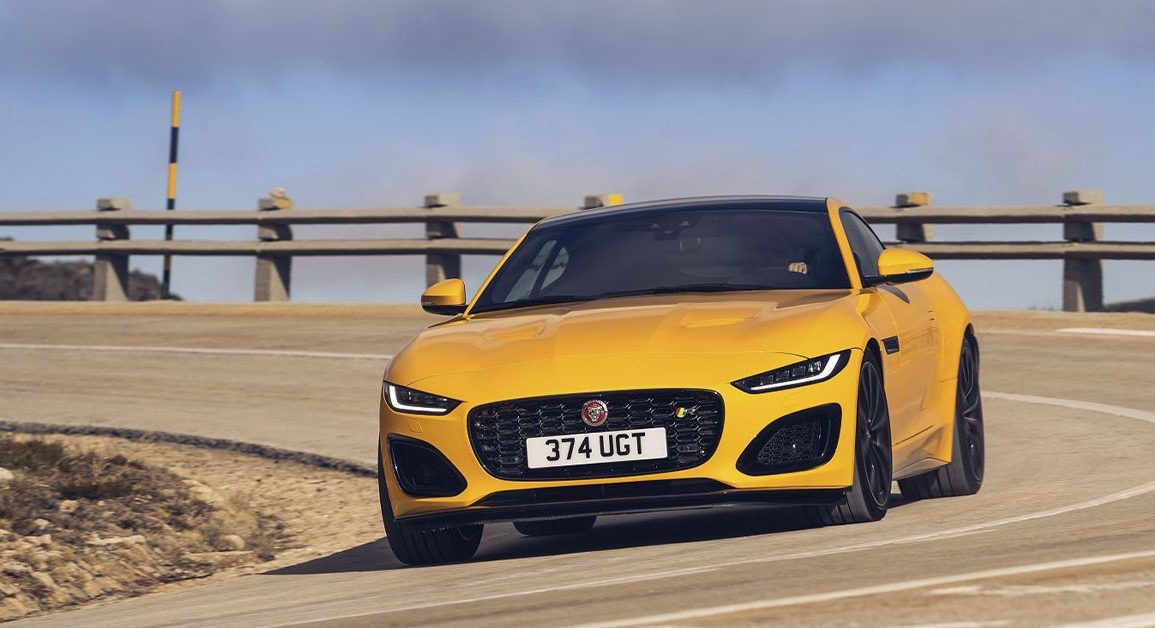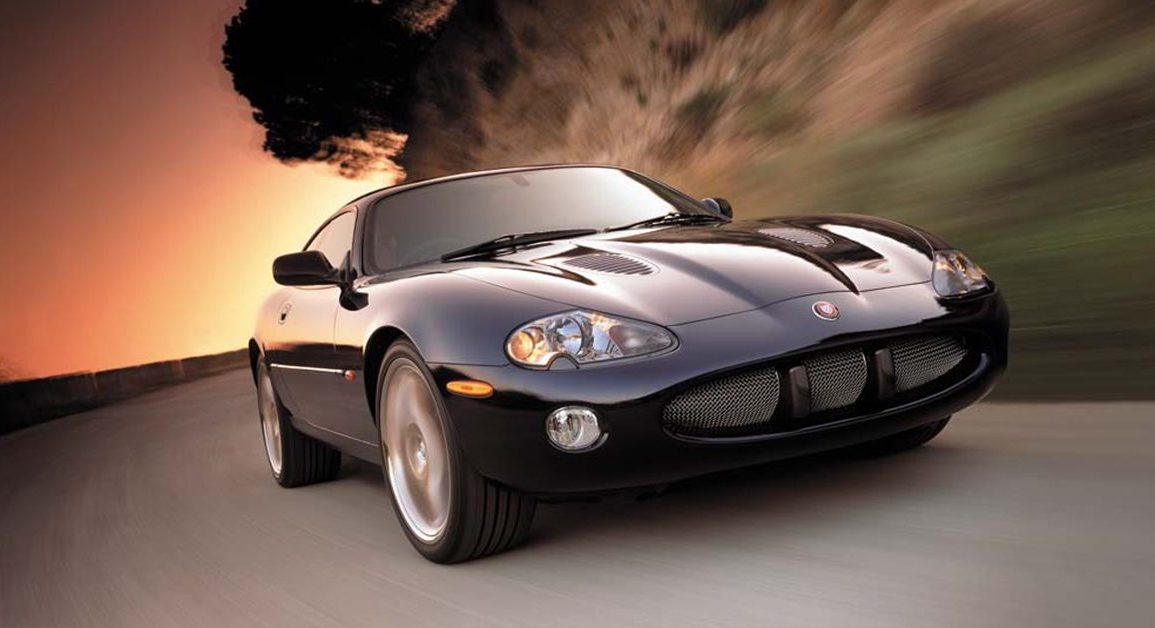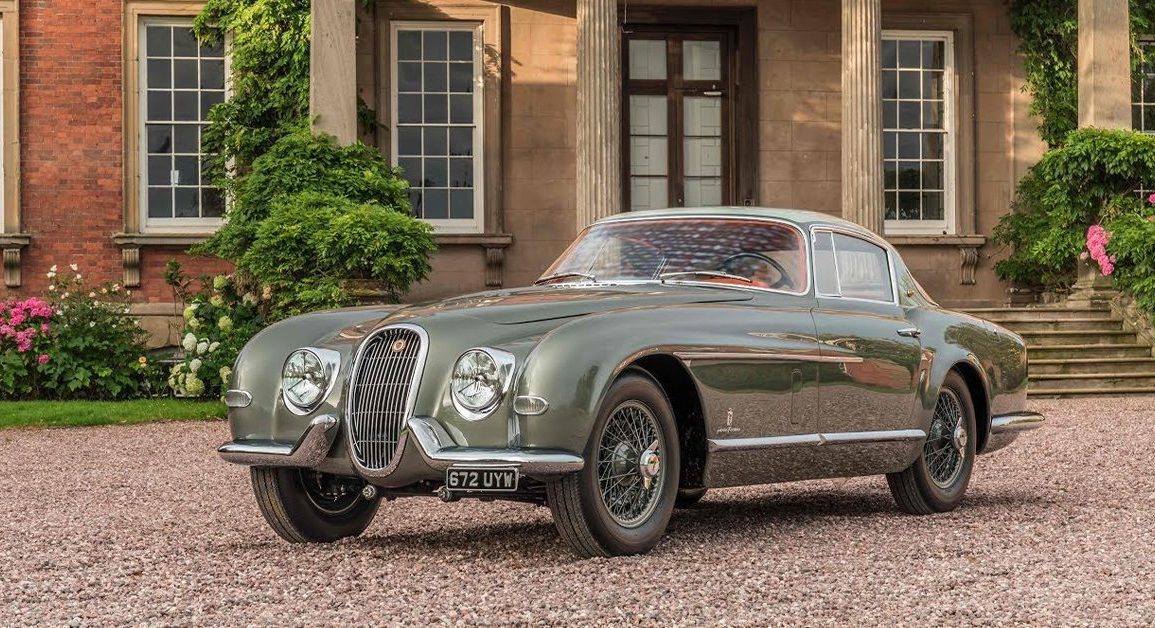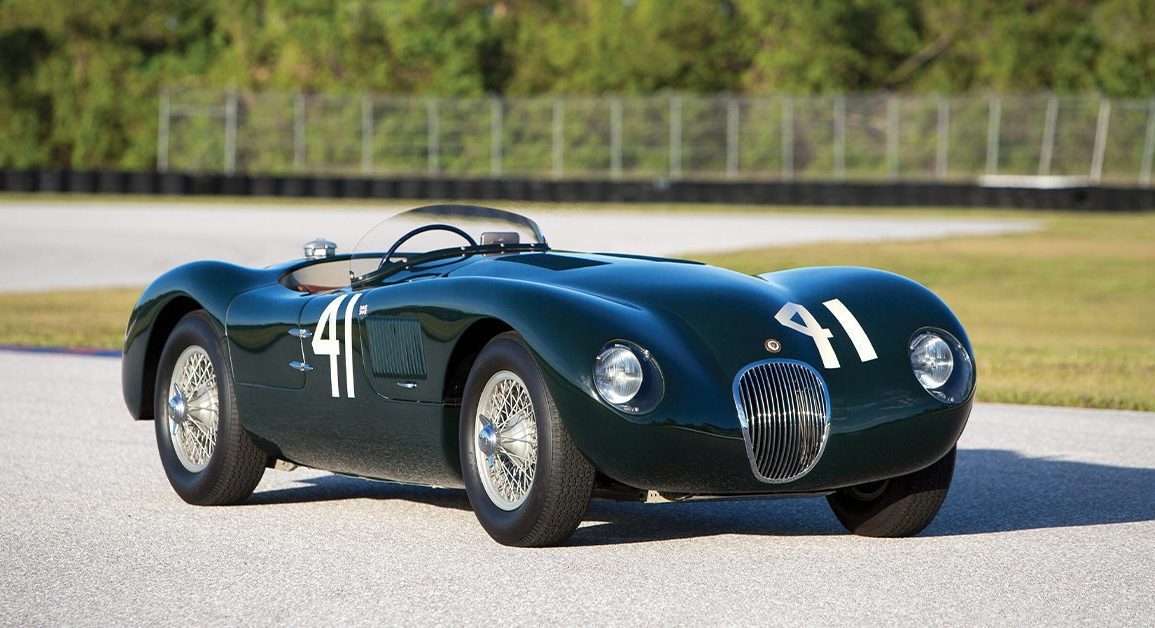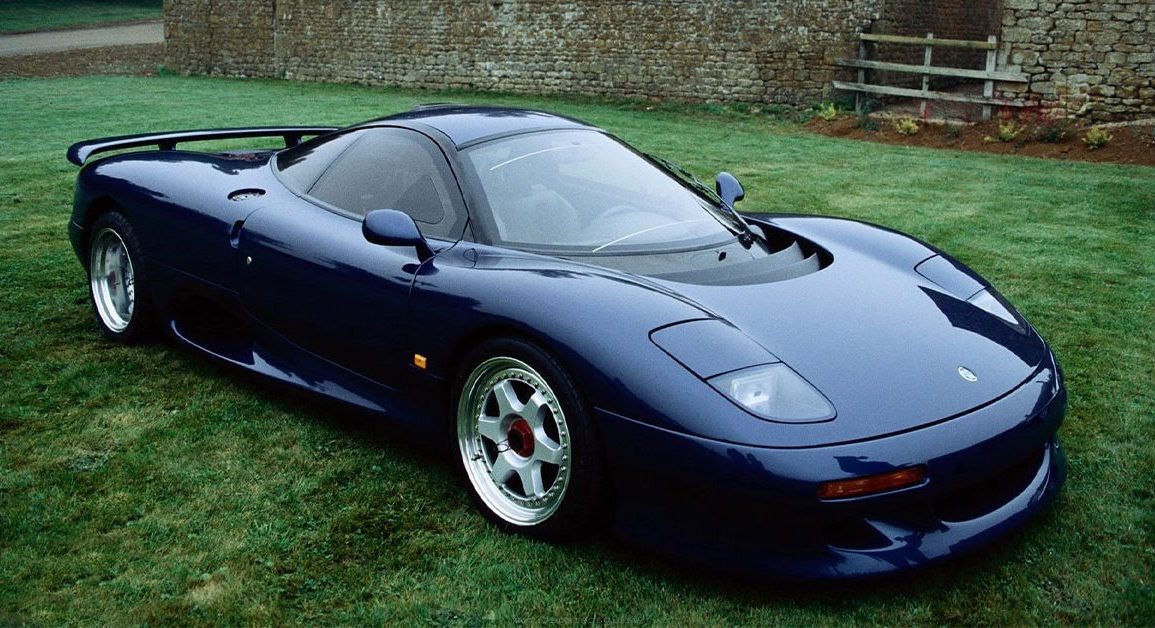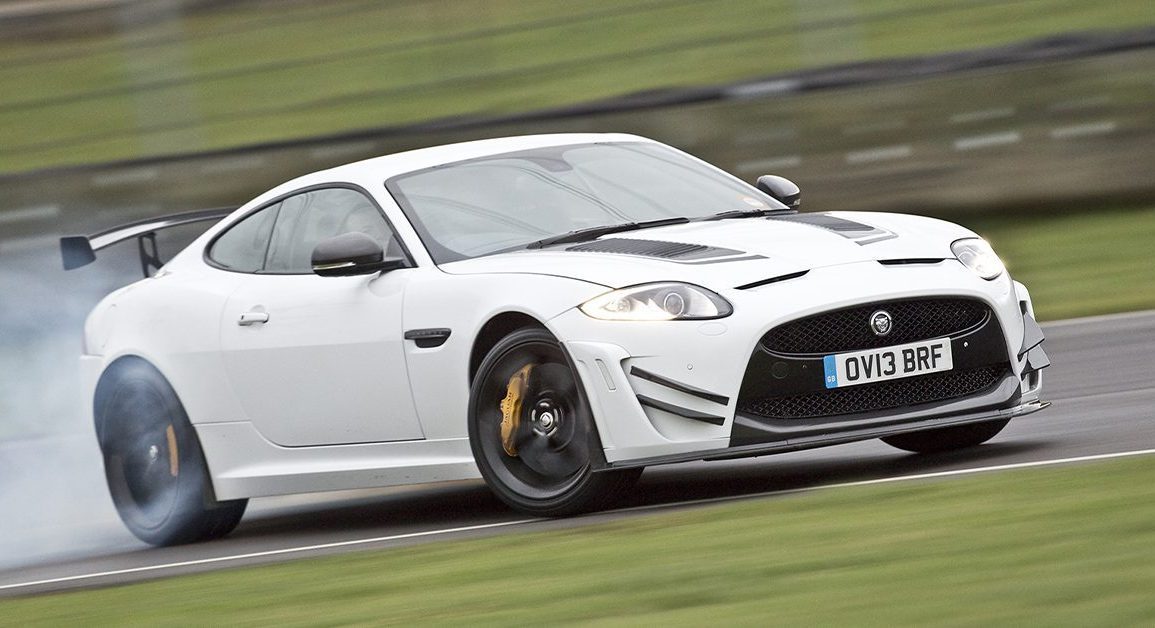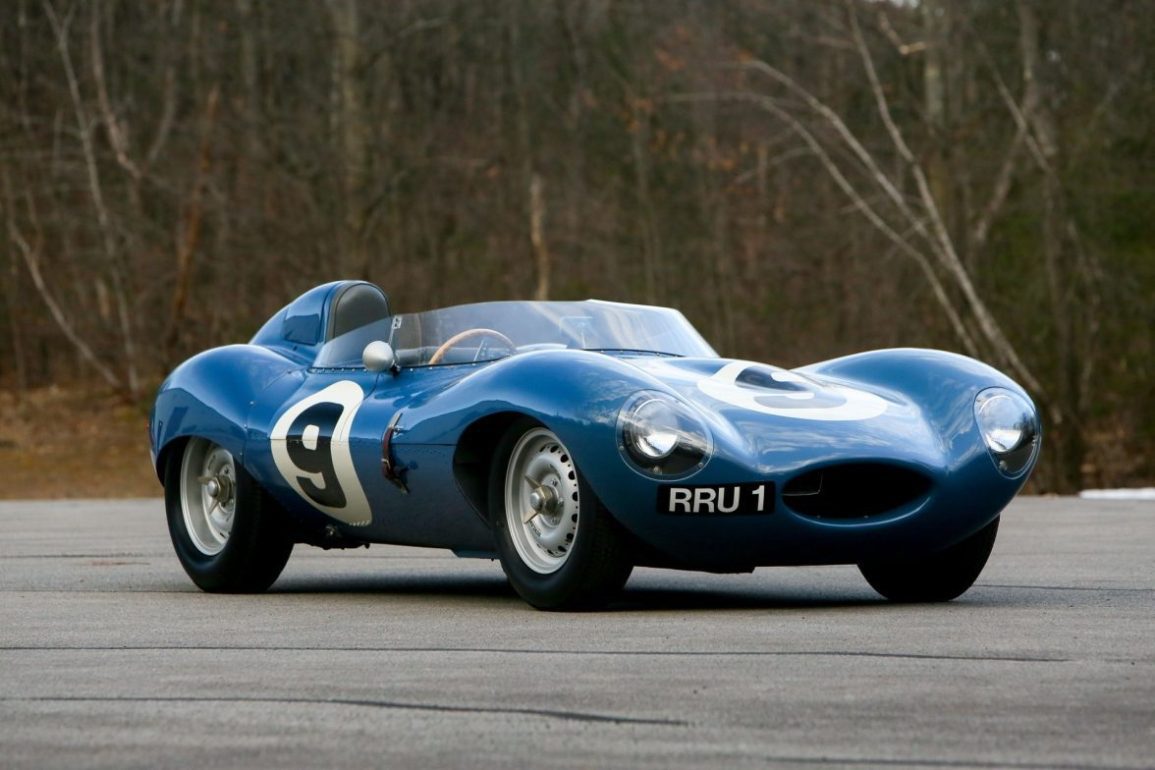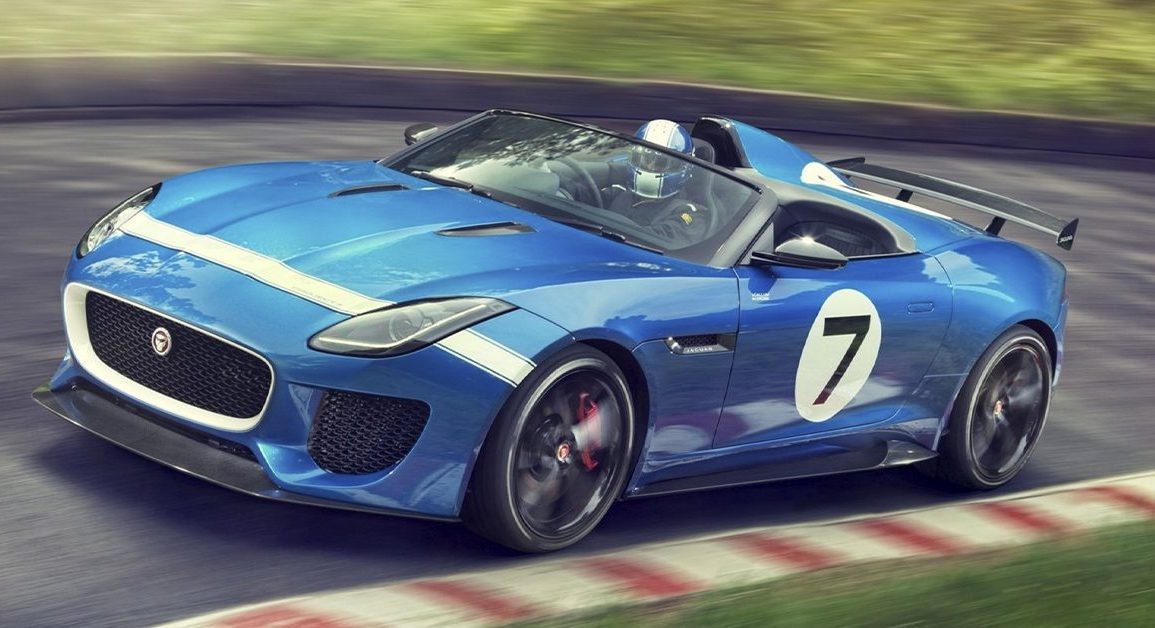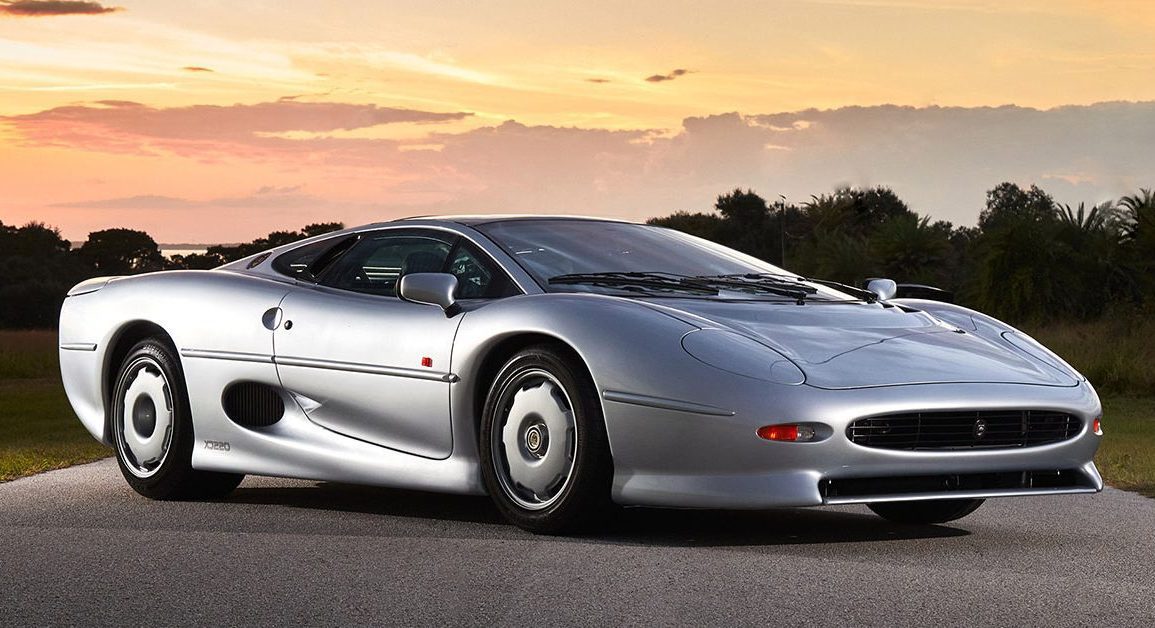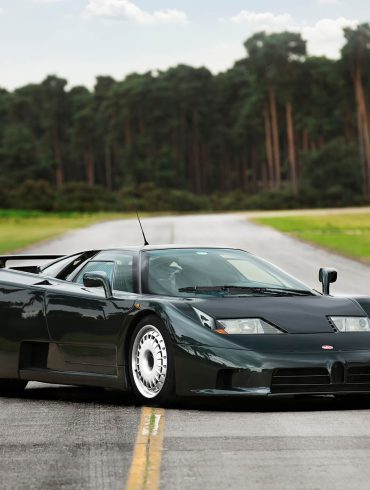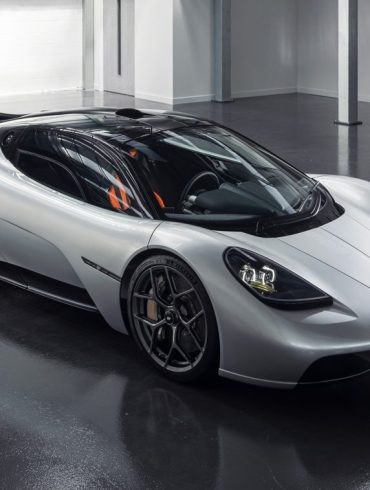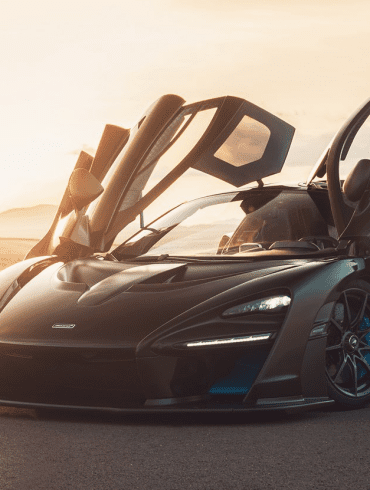The Greatest Jaguars Of All Time
The Masterpieces. Here Are The Best Jaguars Ever Made
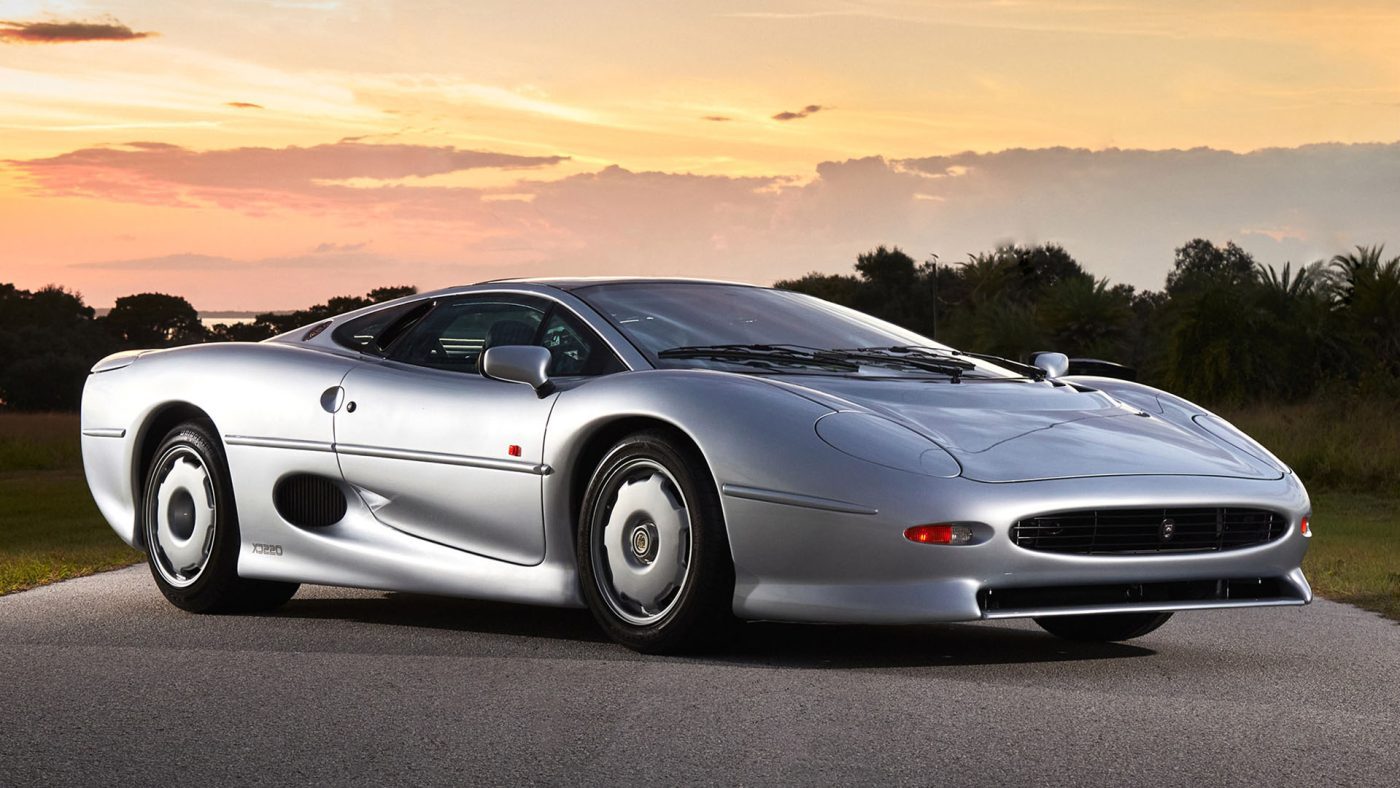
From motorsports legends to seminal shapes, these Jaguars have left an indelible mark on the industry
About Our Selections
Jaguar has had a tumultuous past, with financial difficulties and sometimes being on the brink of extinction. However, there have also been some truly magnificent Jaguars and a motorsports legacy to envy. Several Jaguar models have set world speed records; others are unquestionably among the most iconic automobiles ever.
Jaguar has recently staged a remarkable comeback, with modern masterpieces that have helped the brand reclaim their former prominence in the global automotive landscape. Here is a rundown of our top picks for the greatest Jaguars ever.
Jaguar E-Type
Simply stunning
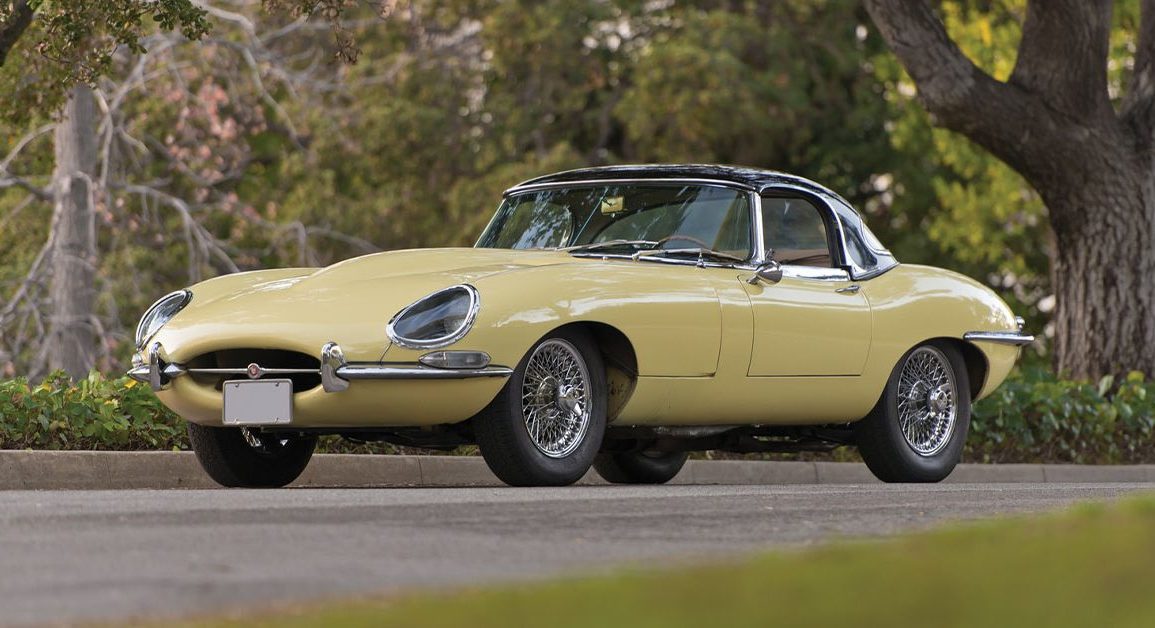
Why We Picked It:
The 1965 Jaguar E-Type is often regarded as one of the most captivating cars ever created, showcasing its status as an iconic masterpiece in automotive design. Malcolm Sayer, a Jaguar aerodynamicist, crafted this incredible piece of art. It emanates a timeless charm.
Underneath its exterior, the E-Type boasted a 4.2-liter inline-six engine that generated 265 horsepower and enabled it to achieve speeds of up to 150 mph.
Its curved body, elongated hood, and distinctive oval grille contributed to its profile, seamlessly combining beauty and functionality.
This iconic Jaguar exhibited agility and handling capabilities. However, it was not solely its appearance but also its race-inspired engineering features, such as independent rear suspension, disc brakes, and a monocoque chassis.
Specifications:
Price: $50,000-$100,000
Engine: 4.2L Inline-Six
Power: 265 hp
Torque: 283 lb-ft
Transmission: 4-Speed Manual
Curb Weight: 2,465 lbs
Highlights:
Malcolm Sayer, who also created the Jaguar D-Type racing car, was responsible for the E-Type's design.
The Italian sports cars of the 1950s served as Sayer's design inspiration for the E-Type, but he also added some contemporary features, like the wraparound windshield.
Learn More:
Jaguar F-Type R
A muscular feline
Why We Picked It:
Many people hailed the new Jaguar, the F-Type when it debuted in 2014 as the E-Type's spiritual successor because it was one of the most stunning sports cars ever made. The F-Type R had a sleeker appearance and chassis, but the car still had that charmingly retro feel.
The F-Type R's 5.0-liter supercharged V8 engine generates 575 horsepower and 516 lb-ft of torque, making it a legitimate contender in the supercar class.
The goal of the Type-R for Jaguar was to create a car that could compete with the likes of the Porsche 911 Turbo, the Audi R8 V10, and the Mercedes-AMG GT S when it came to size and power. This vehicle could hold its own against the German artillery.
The F-Type R has a Quiet Start system that reduces engine noise, but putting it in Sport mode (or pressing the sports exhaust button) will make it sound like a rabid cat.
Specifications:
Price: $80,000-$100,000
Engine: 5.0L Supercharged V8
Power: 575 hp
Torque: 516 lb-ft
Transmission: 8-Speed Automatic
Curb Weight: 3,940 lbs
Highlights:
The F-Type R is a quick and responsive vehicle. It boasts a lightweight aluminum chassis and a high-tech suspension system, making it very maneuverable and capable of tight turns.
Thanks to its supercharged 5.0L V8 engine, the F-Type R can accelerate from 0 to 60 mph in just 3.5 seconds, reaching a top speed of 186 mph.
Learn More:
Jaguar XKR Coupe
The luxurious grand tourer
Why We Picked It:
The Jaguar XKR 1999 sports classic British elegance with its sleek and graceful design and refined curves, accurately representing Jaguar's commitment to aesthetics. It's undoubtedly one of the most stunning Jaguars of the modern era.
This grand tourer has a 4.0-liter supercharged V8 developed from the AJ-V8 engine family. The supercharger boosts the engine's output to unleash 370 horsepower and 387 lb-ft of torque. The XKR accelerates from 0 to 60 mph in 5.2 seconds and has a top speed of 155 mph.
The XKR has a competent 5-speed automatic transmission, allowing for effortless shifts and seamless power delivery to the rear wheels. Its adaptive suspension system ensures a comfortable and controlled ride, even at high speeds. Precise steering and well-tuned chassis dynamics perfectly balance agile handling and a refined cruising experience.
The cabin features leather seats, exquisite wood trim, and brushed aluminum accents to elevate the interior's ambiance. The Jaguar XKR solidified Jaguar as a manufacturer of refined grand tourers that could rival the best in the segment.
Specifications:
Price: $10,000-$25,000
Engine: 4.0L Supercharged V8
Power: 370 hp
Torque: 387 lb-ft
Transmission: 5-Speed Automatic
Curb Weight: 3,825 lbs
Highlights:
The XKR was notable for being a high-powered tourer with a sophisticated and thrilling driving experience sprinkled with the comfort and performance you'd expect from a Jaguar.
The XKR is now in high demand among collectors due to its timeless good looks, plush interior, and powerful engine.
Learn More:
Jaguar XK120 Pininfarina
The rarest Jaguar ever
Why We Picked It:
The 1954 Pininfarina-designed XK120 SE may be the rarest Jaguar ever made. The legendary Italian design studio Pininfarina was commissioned to create a one-of-a-kind body for this XK120. In 1954, it found its way into the hands of Max Hoffman, an Austrian-born New Yorker who specialized in importing European automobiles.
Hoffman was inducted into the Automotive Hall of Fame in 2003 for being a car enthusiast whose ideas led to creating and improving various models from the industry's top manufacturers. According to legend, Hoffman was the driving force behind Pininfarina's 1955 Geneva Motor Show debut of a reimagined XK.
The Autocar Show in April of that year followed the XK's debut in Geneva. It was supposed to be displayed at the Turin Motor Show in 1956, but the owner reportedly wanted to deliver it before. The Pininfarina did not change the chassis or engine (a 3.4-liter inline-six). So it stayed at 180 hp, which gives the base XK120 SE a top speed of 130 mph.
Specifications:
Price: $1,000,000
Engine: 3.4L Inline-Six
Power: 160 hp
Torque: 195 lb-ft
Transmission: 4-Speed Manual
Curb Weight: 3,040 lbs
Highlights:
Since the Jaguar XK120's looked dated for the U.S. market, Max Hoffman commissioned Pininfarina to create a Coupé body that harkened to a contemporary pontoon design.
Although the bodywork of an XK120 was one of the most appreciated Jaguar models for its aesthetic lines, Pininfarina did a sensational job of modifying its classic shape.
Learn More:
Jaguar C-Type
A motorsports legend
Why We Picked It:
The history of the Jaguar C-Type in motorsports is second to none. Only a select few can say they were responsible for introducing ground-breaking technology that not only helped them win races but would eventually make its way into production cars, greatly enhancing their safety. Not many automobiles can make the same aesthetic claim.
Jaguar's attempt at motorsport glory began the year before its 1951 debut. After the XK120's promising performance in the 24 Hours of Le Mans, Jaguar set out to make it lighter and more aerodynamic.
The ensuing C-Type ('C' for 'Competition') enclosed the XK120's mechanicals in a tubular steel frame and covered it with a more aerodynamic aluminum skin. The 3.4-liter straight-six engine generated 205 horsepower, more than the standard XK120 motor.
The modifications paid off, as the C-Type won its first competitive race, the Le Mans. Peter Walker and Peter Whitehead won the race by nine laps in the third C-Type.
Specifications:
Price: $1,700,000-$4,250,000
Engine: 3.4L Inline-Six
Power: 205 hp
Torque: 195 lb-ft
Transmission: 5-Speed Manual
Curb Weight: 2,130 lbs
Highlights:
The 16-gauge tubular design of the C-Type, with drilled channel-section members and triangulated support, replaced the steel ladder-type frame of the XK120.
A curvaceous aluminum body was designed by aerodynamicist Malcolm Sayer to cover this new chassis. He left a minimum of clearances to give a small frontal area.
Learn More:
Jaguar XJR-15
A raw, street-legal race car
Why We Picked It:
The XJR-15 was a limited-production supercar that Jaguar Sport and TWR built for a brand-new series called the Intercontinental Challenge. The design was loosely based on the XJR Group-C cars TWR manufactured for Jaguar. Thus, it retained the XJR-8's 6-liter engine and basic chassis layout.
Jaguar Sport fitted bumper blinkers and raised the overall clearance for clients wishing to use the car on the road. This greatly affected overall performance, as the undertray aerodynamics and suspension were optimized for a shallow ride height.
The car's mechanical design was based on the Le Mans-winning Jaguar XJR-9, and Peter Stevens, who later styled the McLaren F1, created an aerodynamic body for it. The powertrain comprised a naturally aspirated 6.0-liter Jaguar V12 engine, churning out 450 horsepower and 420 lb-ft of torque and spinning the rear wheels via a five-speed manual gearbox. The Jaguar XJR-15 had a 0 to 60 mph time of 3.2 seconds and a top speed of 191 mph.
Specifications:
Price: $1,270,000
Engine: 6.0L V12
Power: 450 hp
Torque: 420 lb-ft
Transmission: 5-Speed Manual
Curb Weight: 2,315 lbs
Highlights:
The XJR-15 had a minimalist interior with a focus on driver involvement. It featured a spartan cockpit with a central driving position, similar to the McLaren F1, with two passenger seats flanking the driver.
The XJR-15 incorporated aerodynamic components, including a prominent rear wing and a front splitter, which helped generate downforce and improved high-speed stability.
Learn More:
Jaguar XKR-S GT
The track predator
Why We Picked It:
This unique GT iteration of the Jaguar XKR-S comes with several chassis and aerodynamic upgrades that improve the car's overall performance and aesthetic. The XKR-S GT features many track-inspired modifications, such as a wider track, stiffer suspension, and larger brakes.
319 pounds of downforce are produced due to redesigning the front apron, adding the aerodynamic appendages, and installing the lightweight carbon fiber rear spoiler. Under the hood is a 5.0-liter V8 engine capable of producing 550 horsepower and 501 lb-ft of torque. This engine is coupled to a six-speed automatic transmission for optimal performance.
The Jaguar XKR-S GT has a top speed of 186 mph and an acceleration time of less than four seconds when going from 0 to 60 miles per hour. Carbon-ceramic disc brakes with six- and four-piston monobloc calipers were installed on the front and rear axles of the Jaguar. The front brakes measured 398 millimeters, and the rear brakes measured 380 millimeters.
The interior maintains the XKR-S's class and distinction while adding a sportier feel with features like bucket seats and extensive use of Alcantara or red stitching.
Specifications:
Price: $75,000-$100,000
Engine: 5.0L Supercharged V8
Power: 550 hp
Torque: 501 lb-ft
Transmission: 7-Speed Automatic
Curb Weight: 3,868 lbs
Highlights:
The suspension of the XKR-S GT is made from lightweight materials and is adjustable for track or road use. The brakes are carbon-ceramic discs that provide excellent stopping power.
The XKR-S GT engine was hand-built by Jaguar's Special Vehicle Operations division, with a limited production of just 50 cars.
Learn More:
Jaguar D-Type
Jaguar's most successful racer
Why We Picked It:
Continuing their successful motorsports program, Jaguar created the D-Type as a progression of the XK120C, or C-Type. The D-Type was launched to assault the 1954 Le Mans. It won the event three years in a row and became Jaguar's most successful race car.
The D-Type was lower and shorter than its predecessor. This helped it achieve a higher top speed and increased cornering capability. Most of the car's form came from mathematical computation with the help of Malcolm Sayer. Initial tests on the unpainted prototype car revealed a top speed of 178 mph, almost 30 mph faster than the Type-C.
The D-Type featured an innovative chassis structure that used stressed-skin engineering, incorporating the framework with riveted aluminum body panels to form a single rigid structure. This design made the D-Type one of the first to use monocoque construction.
The XK-based engine was shorter and more potent than the previous engines, thanks to dry-sump lubrication. Combining a revised block, larger valves, and triple Weber carburetors helped it achieve 245 hp.
Specifications:
Price: $4,500,000-$5,500,000
Engine: 3.4L Inline-Six
Power: 245 hp
Torque: 240 lb-ft
Transmission: 4-Speed Manual
Curb Weight: 1,852 lbs
Highlights:
The D-Type employed a rigid axle in the back and double wishbones in the front for suspension. This ws the standard equipment on all Jaguars of the era.
Dunlop disc brakes were employed on all four wheels. This potent feature helped the C-Type achieve victory at the 1953 Lemans.
Learn More:
Jaguar Project 7
A modern take on a classic roadster
Why We Picked It:
The Jaguar Project 7 roadster concept premiered at the Goodwood Festival of Speed in July 2013. Jaguar's new two-seater convertible sports car, the F-Type, won the World Car Design of the Year 2013 award and is the basis for Project 7.
Notable exterior modifications compared to the F-Type included a fairing behind the driver’s head, a lowered windscreen, a redesigned front bumper, a new front splitter, side skirts, and a rear diffuser made from carbon fiber. The one-of-a-kind interior of Project 7 included a composite single-seat outfitted with a racing harness, a helmet holder, and distinctive upholstery.
The blue paint job of Project 7 is a nod to the winning Jaguar D-types of 1956 and 1957, and the car's moniker, "Project 7," honors Jaguar's record-setting seven victories at Le Mans between 1951 and 1990.
The high-performance sports automobile "Project 7" was a fully functional concept. The F-TYPE's robust all-aluminum design is an excellent foundation, and the 550 hp and 502 lb-ft of torque from Jaguar's 5.0-liter supercharged V8 engine are significant improvements over the F-TYPE V8 S.
Specifications:
Price: $167,000-$200,000
Engine: 5.0L Supercharged V8
Power: 550 hp
Torque: 502 lb-ft
Transmission: 8-Speed Automatic
Curb Weight: 3,671 lbs
Highlights:
Jaguar only produced 250 units of the Project 7, instantly making it an exclusive and sought-after collector's item.
Project 7 boasted excellent handling characteristics. It featured a modified suspension, carbon-ceramic brakes, and aerodynamic enhancements to ensure it could take on winding roads with precision.
Learn More:
Jaguar XJ220
The six-cylinder misfit
Why We Picked It:
In 1984, one of the heads of the Jaguar development department came up with the idea for a supercar that could compete with the most current and fastest supercars available at the time, such as the Ferrari F40, the Lamborghini Diablo, the Bugatti EB110, or the Porsche 959.
Initial plans to have a V12 under the hood fell apart after Ford acquired Jaguar and the American and decided to turn to a legacy 3.5-liter twin-turbocharged V6 racing engine that developed 550 hp of power and torque. The Jaguar XJ220 concept car, designed by Keith Helfet, was unveiled at the 1989 Birmingham Motor Show to great acclaim.
The XJ220 had a striking and futuristic design, with scissor doors and a low, sleek profile. It was one of the first cars to feature a rear wing that deployed automatically at high speeds. It also boasted a carbon fiber monocoque chassis built from lightweight aluminum, contributing to improved maneuverability and overall performance.
Specifications:
Price: $300,000-$700,000
Engine: 3.5L Twin-Turbocharged V6
Power: 542 hp
Torque: 475 lb-ft
Transmission: 5-Speed Manual
Curb Weight: 3,025 lbs
Highlights:
The XJ220 was one of the most expensive cars of its time, with a base price of £470,000 (equivalent to over £1.3 million in today's money).
The XJ220 could accelerate from 0 to 60 mph in less than 4 seconds and reach a mind-blowing top speed of 213 mph. It was the fastest production car until the arrival of the McLaren F1.


